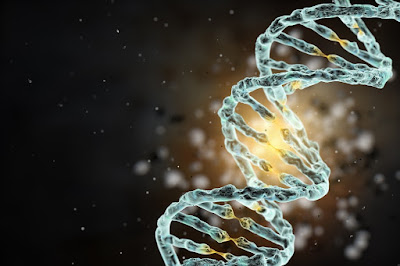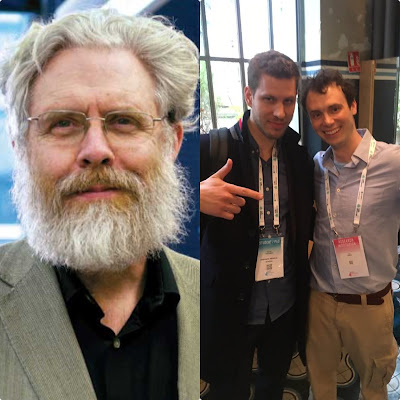
The world around us, the world in which we live, the world in which we reside, the world in which we thrive is greatly affected by science and technology. Since the dawn of evolution every scientific discovery has one key objective the betterment of mankind to make life of humans better. The beginning of 21st century came with a promise to be a century of ultimate evolution and scientific marvels and among those marvels is the renowned Genome Editing technology the “CRISPR”. Since its introduction in late 2010’s the tech has completely revolutionized every field of science from bio medicines to pharmaceuticals to agriculture. The technology is a promising tech owing to its great impact and positive results. Apart from the ethical dilemma involving human gene editing one of the key targets that remain insight with this great tech in hand is to manage and find cure for various genetic disorders. This aim just got a new boost as the CRISPR broke another record.
Breaking the Record:
An essential focus with the CRISPR technology is to achieve multiplex editing and dealing with junk DNA. George church a globally renowned geneticist alongside his team previously performed an experiment involving removal of 62 copies of retroviral DNA lurking around the pig genome the target was to remove viral DNA avoid chances of infection by viruses and making smooth transition for pig-human organ transplant possible. This was previously the best results and probably highest number of the edits performed in a single gene editing experiment. A recent effort by the same scientific team headed by Dr. Church and including their associates Oscar Castanon and Cory Smith includes mass scale alteration of genome and its post edit viability estimation. The team have just submitted their findings which states they have successfully altered the genome at 13200 locations and the cell survived after the experiment. One of the major constraints of CRISPR genome editing is to ensure that the experiment is feasible and cell survives, live and able to reproduce after the experiment. In this study the team target a large segment of DNA called the LINE-1—which is a large transposable element able to shift itself along the genome and is reportedly about 17% of the total human genome. The LINE1 has been reported to cause some devastating disease including haemophilia, colon cancer and many more, which indicates a dire need for solution but in the mean time dealing with it is a huge challenge as it consists of such a large portion of our DNA. But despite of all these hurdles the team achieved a milestone they have altered the LINE1 from about 13000 spots with an all new version of the CRISPR/CAS called the base editor and the cell successfully survived in post experimental evaluations.
The world around us, the world in which we live, the world in which we reside, the world in which we thrive is greatly affected by science and technology. Since the dawn of evolution every scientific discovery has one key objective the betterment of mankind to make life of humans better. The beginning of 21st century came with a promise to be a century of ultimate evolution and scientific marvels and among those marvels is the renowned Genome Editing technology the “CRISPR”. Since its introduction in late 2010’s the tech has completely revolutionized every field of science from bio medicines to pharmaceuticals to agriculture. The technology is a promising tech owing to its great impact and positive results. Apart from the ethical dilemma involving human gene editing one of the key targets that remain insight with this great tech in hand is to manage and find cure for various genetic disorders. This aim just got a new boost as the CRISPR broke another record.
Breaking the Record:
An essential focus with the CRISPR technology is to achieve multiplex editing and dealing with junk DNA. George church a globally renowned geneticist alongside his team previously performed an experiment involving removal of 62 copies of retroviral DNA lurking around the pig genome the target was to remove viral DNA avoid chances of infection by viruses and making smooth transition for pig-human organ transplant possible. This was previously the best results and probably highest number of the edits performed in a single gene editing experiment. A recent effort by the same scientific team headed by Dr. Church and including their associates Oscar Castanon and Cory Smith includes mass scale alteration of genome and its post edit viability estimation. The team have just submitted their findings which states they have successfully altered the genome at 13200 locations and the cell survived after the experiment. One of the major constraints of CRISPR genome editing is to ensure that the experiment is feasible and cell survives, live and able to reproduce after the experiment. In this study the team target a large segment of DNA called the LINE-1—which is a large transposable element able to shift itself along the genome and is reportedly about 17% of the total human genome. The LINE1 has been reported to cause some devastating disease including haemophilia, colon cancer and many more, which indicates a dire need for solution but in the mean time dealing with it is a huge challenge as it consists of such a large portion of our DNA. But despite of all these hurdles the team achieved a milestone they have altered the LINE1 from about 13000 spots with an all new version of the CRISPR/CAS called the base editor and the cell successfully survived in post experimental evaluations.

George Church(Left) Oscar Castanon and Cory Smith (Right)
Prior to this research many renowned scientists across the globe have attempted to deal with the LINE1 using the CRISPR but none was able to find some effective results. For instance in 2016 Dr. Geoff Faulkner from the University of Queensland in Australia worked with CRISPR as he attempted to knock out LINE from about 500 mice embryos but the final results showed none of the embryos could survive mass scale editing. After knowing the results from Dr. Church’s team he himself praised this new approach and said:
“They found a way to do the experiment without causing gross genome-wide instability”
—Dr.Geoff Faulkner
In a closely related study in 2017 another Australian Scientist Dr. Paul Thomas created massive edits in Y chromosome of mice and pushed it out of the frame the results of the study shows great potential for the tech to cure certain genetic disorders like down’s syndrome.
Conclusion:
With every single day passing on human race is facing new and new challenges which is met by an equally high efforts from mankind to deal with these issues. These new results shows how widely can the genome editing be used to cure not one but multiple ailments and its ultimate influence as one of the deciding factors for the better survival of mankind.
Source: https://crisprpedia....ng-records.html
Edited by Engadin, 06 April 2019 - 11:50 PM.












































